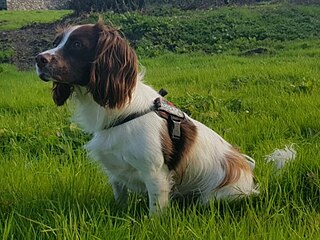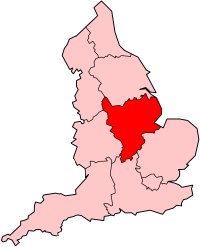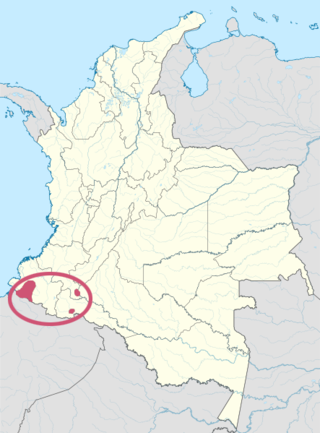Notes
Related Research Articles

Khmer is an Austroasiatic language spoken by the Khmer people, and the official and national language of Cambodia. Khmer has been influenced considerably by Sanskrit and Pali, especially in the royal and religious registers, through Hinduism and Buddhism. It is also the earliest recorded and earliest written language of the Mon–Khmer family, predating Mon and Vietnamese, due to Old Khmer being the language of the historical empires of Chenla, Angkor and, presumably, their earlier predecessor state, Funan.

A straw man fallacy is the informal fallacy of refuting an argument different from the one actually under discussion, while not recognizing or acknowledging the distinction. One who engages in this fallacy is said to be "attacking a straw man".
This is a list of British words not widely used in the United States. In Commonwealth of Nations, Malaysia, Singapore, Hong Kong, Ireland, Canada, New Zealand, India, South Africa, and Australia, some of the British terms listed are used, although another usage is often preferred.

The English Springer is a breed of gun dog in the Spaniel group traditionally used for flushing and retrieving game. They are descended from the Norfolk or Shropshire Spaniels of the mid-19th century; the breed has diverged into separate show and working lines. It is closely related to the Welsh Springer Spaniel and very closely to the English Cocker Spaniel; less than a century ago, springers and cockers would come from the same litter. The smaller "cockers" were used in woodcock hunting while their larger littermates were used to flush, or "spring", other game birds. In 1902, The Kennel Club recognized the English Springer Spaniel as a distinct breed. They are used as sniffer dogs on a widespread basis. The term Springer comes from the historic hunting role, where the dog would flush (spring) birds into the air.
In generative morphology, the righthand head rule is a rule of grammar that specifies that the rightmost morpheme in a morphological structure is almost always the head in certain languages. What this means is that it is the righthand element that provides the primary syntactic and/or semantic information. The projection of syntactic information from the righthand element onto the output word is known as feature percolation. The righthand head rule is considered a broadly general and universal principle of morphology. In certain other languages it is proposed that rather than a righthand head rule, a lefthand head rule applies, where the lefthand element provides this information.
Teso is an Eastern Nilotic language spoken by the Teso people of Uganda and Kenya and some speakers are in South Sudan. It is part of the Teso–Turkana language cluster.

Venezuelan Spanish refers to the Spanish spoken in Venezuela.

Kashaya is the critically endangered language of the Kashia band of the Pomo people. The Pomoan languages have been classified as part of the Hokan language family. The name Kashaya corresponds to words in neighboring languages with meanings such as "skillful" and "expert gambler". It is spoken by the Kashia Band of Pomo Indians of the Stewarts Point Rancheria.

Waterfowl hunting is the practice of hunting aquatic birds such as ducks, geese and other waterfowls or shorebirds for food and sport.

East Midlands English is a dialect, including local and social variations spoken in most parts of East Midlands England. It generally includes areas east of Watling Street, north of an isogloss separating it from variants of Southern English and East Anglian English, and south of another separating it from Northern English dialects. This includes the counties of Derbyshire, Leicestershire, Lincolnshire, Nottinghamshire, Rutland and Northamptonshire. Dialects of northern Derbyshire, Nottinghamshire and Lincolnshire usually share similarities with Northern English dialects. Relative to other English dialects, there have been relatively few studies of East Midlands English.
This article is a description of the morphology, syntax, and semantics of Korean. For phonetics and phonology, see Korean phonology. See also Korean honorifics, which play a large role in the grammar.
British slang is English-language slang originating from and used in the United Kingdom and also used to a limited extent in Anglophone countries such as India, Malaysia, Ireland, South Africa, Australia, Canada, and New Zealand, especially by British expatriates. It is also used in the United States to a limited extent. Slang is informal language sometimes peculiar to a particular social class or group and its use in Britain dates back to before the 15th century. The language of slang, in common with the English language, is changing all the time; new words and phrases are being added and some are used so frequently by so many, they almost become mainstream.
Abui is a non-Austronesian language of the Alor Archipelago. It is spoken in the central part of Alor Island in Eastern Indonesia, East Nusa Tenggara (NTT) province by the Abui people. The native name in the Takalelang dialect is Abui tanga which literally translates as 'mountain language'.

Located in the region of Colombia and Ecuador, the Awa or Awa Pit speaking people is an indigenous group settled between the Andes Mountains and the Western Coast. Awa Pit or otherwise known as Cuaiquer, in both group and name, is classified as part of the Barbacoan language. Another term that this group goes by is the "Inkal Awa" or "the mountain people", to distinguish themselves from other indigenous groups within that region. Awa pit is classified by UNESCO as a severely endangered language. The Awa pit language has a subject–object–verb structure and has adopted the Latin script. Grammatically, Awa pit uses a characteristic conjunct/disjunct system of verb suffixes for person-marking which displays similarities with some Tibeto-Burman languages, such as the Newari language of Kathmandu.

Pashto is an S-O-V language with split ergativity. Adjectives come before nouns. Nouns and adjectives are inflected for gender (masc./fem.), number (sing./plur.), and case. The verb system is very intricate with the following tenses: Present; simple past; past progressive; present perfect; and past perfect. In any of the past tenses, Pashto is an ergative language; i.e., transitive verbs in any of the past tenses agree with the object of the sentence. The dialects show some non-standard grammatical features, some of which are archaisms or descendants of old forms.
Aramba (Arammba), also known as Serki or Serkisetavi, is a Papuan language of Papua New Guinea. It is spoken to the south of Western Province in the Trans Fly region. Aramba belongs to the Tonda Sub-Family, which is next to the Nambu Sub-Family region and the Suki language. Alternative names for the language include Upper Morehead, Rouku, Kamindjo and Tjokwasi.
Satawalese is a Micronesian language of the Federated States of Micronesia. It is nearly mutually intelligible with Mortlockese and Carolinian.
Swedish profanity can be divided into several categories. A substantial number of curse words in Swedish have religious origins. Euphemistic variants of the religious curses are commonly used as well. References to genitalia or bodily functions are common in the Swedish profanity vocabulary. Notably, no word for sexual intercourse is commonly used in invectives, unlike many other languages. However, calques of English fuck using knull (noun), knulla (verb) do occur; this comes across as more offensive than fuck does in English. In general, knull(a), along with genitalia slang words like kuk ('cock') and fitta ('cunt') are the most offensive single words. By contrast, most of the traditional religious profanities are not considered very offensive today; this is in line with Sweden's long-standing secularism.
The Hachijō language shares much of its grammar with its sister language of Japanese—having both descended from varieties of Old Japanese—as well as with its more distant relatives in the Ryukyuan language family. However, Hachijō grammar includes a substantial number of distinguishing features from modern Standard Japanese, both innovative and archaic.